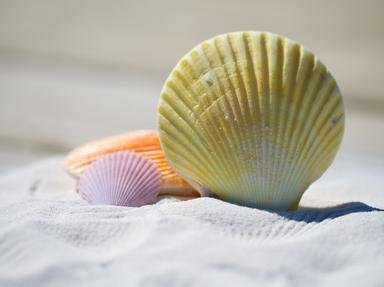Quiz Answer Key and Fun Facts
1. Which of these molluscs is not a bivalve?
2. What is the usual method of locomotion for a bivalve?
3. Where would you find a bivalve's lamellibranch?
4. Only bivalves can produce pearls.
5. What is the commonest cause of pearl formation?
6. Although snails live in many habitats, bivalves only live in water.
7. What is the commonest form of bivalve reproduction?
8. What do all bivalves lack that are found in snails?
9. What is the usual method of bivalve feeding?
10. Which body part is lacking in a bivalve that is found in all other molluscs?
Source: Author
satguru
This quiz was reviewed by FunTrivia editor
crisw before going online.
Any errors found in FunTrivia content are routinely corrected through our feedback system.

